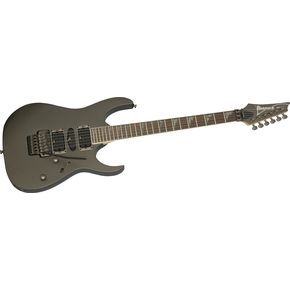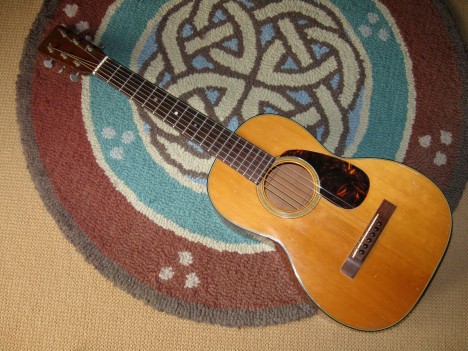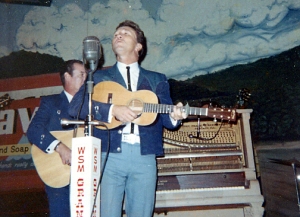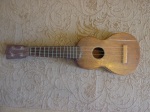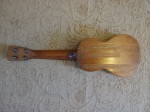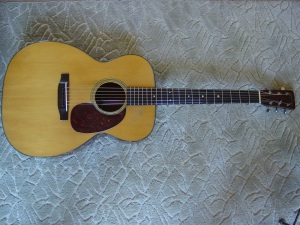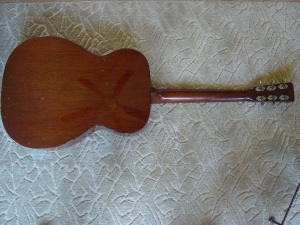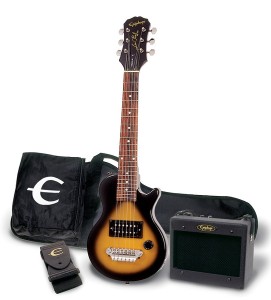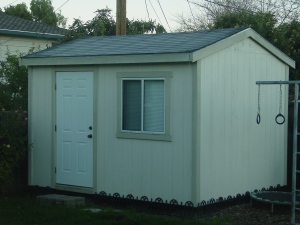My Ibanez Electric Guitar Story
I have been playing Ibanez electric guitars since 1985, when while on a vacation to Europe, I could not stand being without a guitar for the three weeks I would be traveling. So I asked at the hotel front desk for the guitar store in Amsterdam with the best selection. The responder said to go to Dikjman Muzikinstrumenten.
I walked for about 20 minutes and located the store. Once inside I was faced with a wall of guitars, probably about 250 different models in both acoustic and electric. I spent about ten minutes perusing the inventory, and sighted an Ibanez, dual-humbucking model, based slightly upon the Gibson SG but rounder and smaller body contours.
The neck-through body construction was solid and when I plugged it in and played it, I stopped looking. The action was low, the pickups growled when turned up, and sang sweetly when turned down. In addition this guitar had coil-tapping switches for each of the pickups, to afford that famous out-of-phase sound so prevalent even today
The cost out the door, (remember in 1985 the Dutch were still exchanging Guilders not Euros), and at 3-1/2 guilders to the dollar I purchased the guitar, a soft case, a guitar cord, guitar picks, a Personal Studio, battery-powered headphone amplifier with reverb, distortion and chrous effects, for a grand total of $200.00 USD.
Fast-Forward To 2008
So now it’s 2008, and I’m still playing this Ibanez, but wanted one with a Floyd-Rose type whammy bar to have fun wiggling notes, and dive-bombing notes down low, then back to normal pitch, without detuning the strings. My favorite sales manager at the local Guitar Center, saw me trying out the Satriani-Model Ibanez guitars on the floor. I really liked the style and playability of these, but the prices were too high for my budget.
Then he said, “you know what, I have a guitar in the back that is last years model, and a model designation down from the Satriani series, and at a reduced cost”. I said, I’m willing to check it out. He disappeared for about 30 minutes, (!) and I was getting ready to leave, when he produced a cardboard carton with the RG5EX1 inside. When I picked up the guitar I was greeted with a silky, satiny neck, with wide frets and low action.
I plugged it in and went throught the pickup selections. This one has the 5-way switch, and positions two and four give you that out-of-phase coil tapped sound I liked. The locking nut and locking Whammy bar tailpiece has the Floyd-Rose like fine tuners, so you unlock the nut-clamps, 3-each allen bolts, one per pair of strings, unscrew the fine tuners alll the way out, tune the guitar to pitch, lock the nut again, and fine tune to pitch.
This guitar is flat out fast! With low action, a wide neck and wide flat frets, the hand falls comfortably onto the strings, and string pressure required is minimal to sound clean ringing notes. The strings stay in tune, and the pickups arrangement (Humbucker at the bridge, Single-coil in the middle, and Humbucker at the neck), all deliver stinging lead tones and mellow chords when strummed.
This particular guitar was list priced at over $740.00, but my friend the manager said, this is last years model, it’s a bit dusty, how about $410.00 tax included. I said….ahhhhh SOLD! I decided to not purchase a case for this one, as it would stay off the road. I have recently purchased a RoadRunner semi-hard case for traveling. This guitar just gets better with time. I enjoy rocking-out, or playing slow ballads, with the powerful array of tones available.
If you are looking for a reasonably priced guitar, that has a range of tones, and that dive-bombing whammy bar, check out the Ibanez RG5EX1. You will not be disappointed!
Please leave me a comment below, what you liked, or did not like about this review?
Respectfully, Nicholas
Specifications
- Basswood body
- 3-piece maple neck
- Wizard II neck profile
- 25-1/2″ scale
- 24 jumbo frets
- Rosewood fingerboard
- Sharktooth inlay
- Reverse headstock
- Edge III tremolo bridge
- INF3 humbucker neck pickup
- INFS3 single coil mid pickup
- INF4 humbucker bridge pickup
- Tone and volume controls
- 5-way pickup switch
Website: www.Ibanez.com
Filed under: The Guitar | Tagged: basswood, electric, Electric Guitars, flat-frets, flat-neck, Guitars, Ibanez, Rock, Whammy-Bar | 23 Comments »


